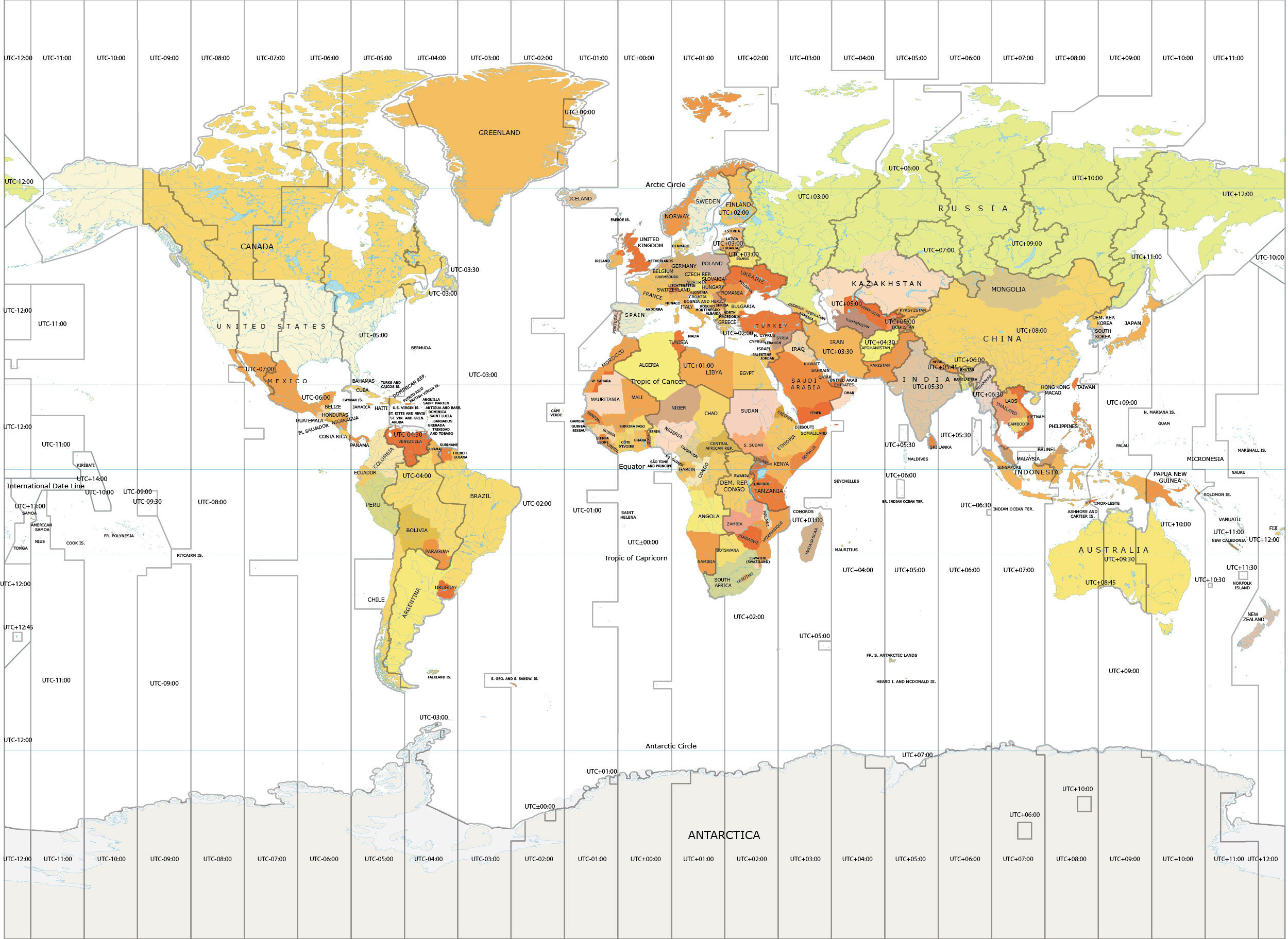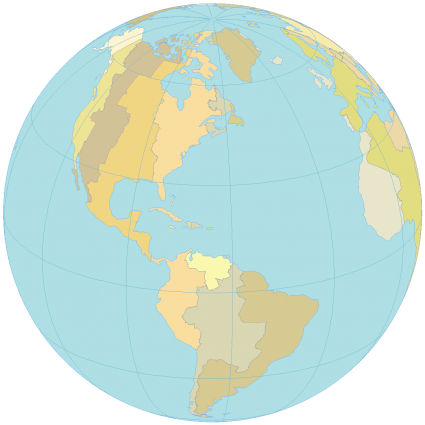World Time Zone Map – GIS Geography

You are free to use our world time zone map for educational and commercial uses. Attribution is required. How to attribute?
Mục Lục
Time Zones Explained

We have 24 different time zones in the world. Because the Earth rotates 360° every 24 hours, each time zone is 15° longitude apart from the other. (360÷24=15)
The Prime Meridian (Greenwich Meridian) defines the center of the first time zone in the world. This means the Prime Meridian time zone spans from 7.5°W to 7.5°E. Then, the next time to the east spans 7.5°E to 22.5°E.
Gaining and losing time
When you move to the right, you gain time (fast time). In other words, for every time zone that you move towards the right, you add one hour. But when you head toward the left, you lose an hour (slow time).
You can find any time by counting how many degrees longitude it is away from Greenwich. For example, it would be 4 pm at 60°E longitude when it’s noon at the Prime Meridian. Whereas it would be 8 am at 60°W longitude
International Date Line
The International Date Line is a north-south line in the Pacific Ocean where you turn your calendar back or ahead one day. The center of the time zone roughly follows 180° longitude without crossing any landmass.
When you cross the International Date Line moving toward the east, you turn your calendar back one day. Whereas when you go from the west across the International Date Line, you turn your calendar ahead one day.
Irregular Time Zone Boundaries
No time zone in the world runs a perfect north-south line. Instead, they are jagged and adapt to the political boundaries of countries. Also, there can be “irregular square” time zones similar to islands.
For example, the province of Newfoundland and Labrador contains its own time zone with the same name that is UTC -3:30. But the province mostly observes Atlantic Standard Time (AST). Other examples include Afghanistan, Venezuela, and Australia with unusual time zones.
List of Time Zones and Abbreviations
Time zones can have names to help easily identify them. For example, this United States time zone map shows the six designated time zones including Eastern, Central, Mountain, Pacific, Alaska, and Hawaii-Aleutian time zones.
Here is a list of time zones and abbreviations that are in use today:
NameDescriptionRelative to GMTGMTGreenwich Mean TimeGMTUTCUniversal Coordinated TimeGMTECTEuropean Central TimeGMT+1:00EETEastern European TimeGMT+2:00ART(Arabic) Egypt Standard TimeGMT+2:00EATEastern African TimeGMT+3:00METMiddle East TimeGMT+3:30NETNear East TimeGMT+4:00PLTPakistan Lahore TimeGMT+5:00ISTIndia Standard TimeGMT+5:30BSTBangladesh Standard TimeGMT+6:00VSTVietnam Standard TimeGMT+7:00CTTChina Taiwan TimeGMT+8:00JSTJapan Standard TimeGMT+9:00ACTAustralia Central TimeGMT+9:30AETAustralia Eastern TimeGMT+10:00SSTSolomon Standard TimeGMT+11:00NSTNew Zealand Standard TimeGMT+12:00MITMidway Islands TimeGMT-11:00HSTHawaii Standard TimeGMT-10:00ASTAlaska Standard TimeGMT-9:00PSTPacific Standard TimeGMT-8:00PNTPhoenix Standard TimeGMT-7:00MSTMountain Standard TimeGMT-7:00CSTCentral Standard TimeGMT-6:00ESTEastern Standard TimeGMT-5:00IETIndiana Eastern Standard TimeGMT-5:00PRTPuerto Rico and US Virgin Islands TimeGMT-4:00CNTCanada Newfoundland TimeGMT-3:30AGTArgentina Standard TimeGMT-3:00BETBrazil Eastern TimeGMT-3:00CATCentral African TimeGMT-1:00















![Toni Kroos là ai? [ sự thật về tiểu sử đầy đủ Toni Kroos ]](https://evbn.org/wp-content/uploads/New-Project-6635-1671934592.jpg)


